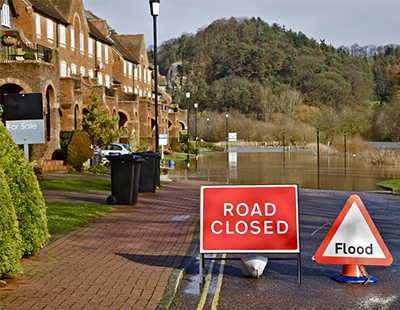
Buyers are not told the true scale of flood risk in many properties - and the rush to beat the stamp duty deadline means many may overlook even existing warnings.
The Zurich UK insurance firm claims 530,000 properties in England alone face a more extreme risk of flooding than official maps suggest.
It says that a home with what appears to be just a three per cent chance of flooding in any one year has in fact got up to a 63 per cent likelihood of being inundated over a typical 30 year mortgage.
The firm also claims households could be more exposed to flooding than they may think due to the official language used to communicate flood risk.
The Environment Agency currently reports flood risk based on the chances of an area flooding in any one year. It rates homes with a so-called 1-in-100-year to a 1-in-30-year chance of flooding as being at “medium” risk.
This means there is a 1.0 to 3.3 per cent chance of a flood occurring in any single year.
But Zurich has warned that when viewed over a typical 30-year mortgage, this equates to between a 26 and a 63 per cent chance of being flooded once in that period – “a far greater risk than the current terminology suggests” says the company.
Zurich said this could leave homebuyers with a misleading impression of their flood risk and lull them into a false sense of security.
There are 446,800 homes and 82,100 non-residential properties in England deemed to be at “medium” risk of flooding.
Kumu Kumar, head of Zurich Resilience Solutions, says: “Predicting flood risk isn’t a perfect science. While Environment Agency maps are a useful guide to flood risk, they can downplay the dangers some properties face.
“Amid the rush to complete sales ahead of the stamp duty deadline, it is important buyers don’t skip crucial checks to assess whether a home is in danger of flooding. As surveys aren’t required to show the risks, the onus falls on buyers to find out whether a home lies in an area at risk of flooding. Buyers need to scrutinise the detail – or they could be hit by unexpected flooding.”
Kumar continues: “As climate change intensifies the frequency and severity of extreme weather, it is vital that people can assess the true flood threat they face. The term a 1-in-100-year flood can give the misleading impression that a flood occurs once every 100 years – when in fact the risk is much higher.
“With a more accurate understanding of their flood risk, people can better prepare for extreme weather and make changes to their property to withstand flooding. The current approach for expressing flood risk is unclear and could lead people to conclude a property is safer than in fact it is.
“The Environment Agency should consider what more it can do to help people understand their flood threat. This could include expressing flood risk as a percentage over the typical lifetime of a mortgage.”


















%20A%20property%20tale%20for%20our%20times.png)








Join the conversation
Jump to latest comment and add your reply
This article shows the consequences of reckless due diligence encouraged by a white-hot property market
Most solicitors rely on what the sellers say about past flooding and flood searches. However critical local knowledge sometimes is not passed on by the seller as part of the conveyancing process.
Perhaps the greater problem is the increasing willingness of some developers to build on historic flood plains, with local planning authorities ignoring the concerns of the Environment Agency when granting planning permission.
With climate change, this problem is only going to get worse.
Please login to comment